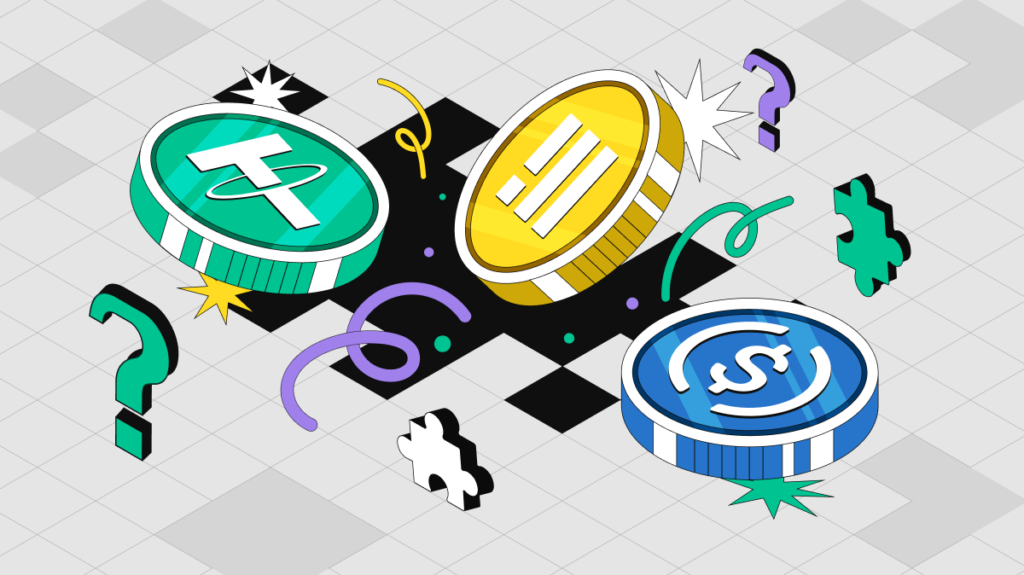Introduction
Stablecoins have become a cornerstone of the cryptocurrency ecosystem, offering a bridge between digital assets and fiat currencies. With a market cap surpassing $226 billion in March 2025, they power trading, DeFi, and cross-border payments. Yet, beneath their promise of stability lies a lurking danger: a Stablecoin bank run, where mass withdrawals could break their peg and destabilize the broader financial system.
This article explores why Stablecoin risks could trigger such a crisis and what it means for the future of digital finance.
The Role of Stablecoins in Crypto

Stablecoins like Tether (USDT) and USD Coin (USDC) are designed to maintain a 1:1 peg to the U.S. dollar, backed by cash or cash-equivalent reserves. Their reliability in a market where Bitcoin can swing 10 percent in a day has driven massive adoption.
- USDT commands a market cap exceeding $143 billion, making it the most traded cryptocurrency by volume.
- Stablecoins facilitate DeFi transactions, enabling users to lend, borrow, and trade without exposure to volatility.
Yet, this reliance on trust in issuers exposes a critical weakness: if confidence wavers, a Stablecoin bank run could unfold.
What Is a Stablecoin Bank Run?
A Stablecoin bank run mirrors traditional financial panics, where users lose faith in an issuer’s ability to redeem tokens at full value. Unlike banks with deposit insurance and regulatory oversight, Stablecoins operate in a largely unregulated space, making them uniquely vulnerable to a rapid liquidity crisis.
Imagine millions of holders redeeming USDT simultaneously. If reserves cannot cover the demand, the peg breaks, triggering panic and contagion across the crypto market.
Key Triggers of a Stablecoin Bank Run
1. Uncertain Reserve Backing
The stability of a Stablecoin depends on what backs it. If issuers:
- Hold less cash than promised or use illiquid assets like bonds or commercial paper,
- Lack transparent audits, raising concerns about their true financial position,
…a sudden redemption surge could break the peg.
Tether (USDT) has faced years of scrutiny over its reserve backing, with critics warning that a lack of full transparency could lead to a crisis.
2. Centralized Points of Failure
Despite crypto’s decentralized ethos, most Stablecoins depend on centralized entities:
- Issuers (Tether, Circle, etc.)
- Custodian banks holding their reserves
- Exchanges facilitating conversions
A failure in any of these points—such as a partner bank freezing Stablecoin assets—could halt redemptions and spark a panic-driven sell-off.
3. Market Panic and Contagion
The crypto market thrives on sentiment. If one major Stablecoin loses its peg, it can create widespread distrust, causing:
- Dumping of other Stablecoins
- Liquidity crises in DeFi protocols that rely on them
- Broader market instability
This has happened before—TerraUSD’s (UST) collapse in 2022, which erased $40 billion, showed how quickly a Stablecoin failure can wipe out investor confidence.
The Domino Effect: How a Bank Run Could Unfold
Consider this hypothetical scenario:
- USDT slips to $0.95 on reports of insufficient reserves.
- Traders dump billions in Stablecoins, driving prices lower.
- DeFi platforms, which use Stablecoins for lending and liquidity pools, experience mass withdrawals, freezing operations.
- The $300 billion DeFi market crashes, losing half its value in days.
- Institutional investors with exposure to Stablecoin-tied securities face losses, shaking confidence in traditional finance.
This contagion effect could extend beyond crypto, influencing broader financial markets.
Mitigating the Threat: The Case for Crypto Regulation

To prevent a Stablecoin bank run, stronger oversight is needed. Key regulatory measures could include:
- 100 percent Liquid Reserve Requirements: Ensuring Stablecoins maintain fully backed reserves in cash or short-term U.S. Treasuries.
- Regular Third-Party Audits: Verifiable audits to eliminate uncertainty about reserve holdings.
- Deposit Insurance for Stablecoins: Similar to FDIC insurance for bank deposits, providing a safety net against mass withdrawals.
Japan’s 2025 Approach: A Model for Stability?
Japan has already implemented strict Stablecoin regulations, requiring issuers to:
- Maintain fully liquid reserves
- Undergo regular independent audits
- Register under a clear legal framework
This has allowed Circle’s USDC to thrive in Japan, while other regions like the United States and the European Union lag behind with fragmented or unclear policies.
Challenges to Regulation
Despite the need for safeguards, regulation faces resistance:
- Crypto purists argue that regulation undermines decentralization.
- Stablecoin issuers worry about compliance costs and operational constraints.
Finding a balance between innovation and financial stability is critical to preventing the next crisis.
Conclusion
Stablecoins promise stability, but their underlying risks—from questionable reserves to centralized vulnerabilities—make them susceptible to a bank run that could destabilize the entire crypto market.
As USDT, USDC, and other major Stablecoins face increasing scrutiny, the stakes rise with their $226 billion market cap.
What Needs to Happen?
- Stronger regulations to ensure full reserve backing
- Transparency in Stablecoin audits
- Investor awareness of risks
Without these safeguards, Stablecoins could become crypto’s biggest systemic risk, one redemption away from disaster.
Disclaimer
The information provided in this article is for informational purposes only and should not be considered financial, investment, or trading advice. Cryptocurrency investments involve significant risks, and investors should conduct their own research or consult a professional before making any decisions. The author and publisher are not responsible for any financial losses related to the use of this information.
4opowerful tools with the power to destabilize if unchecked.




